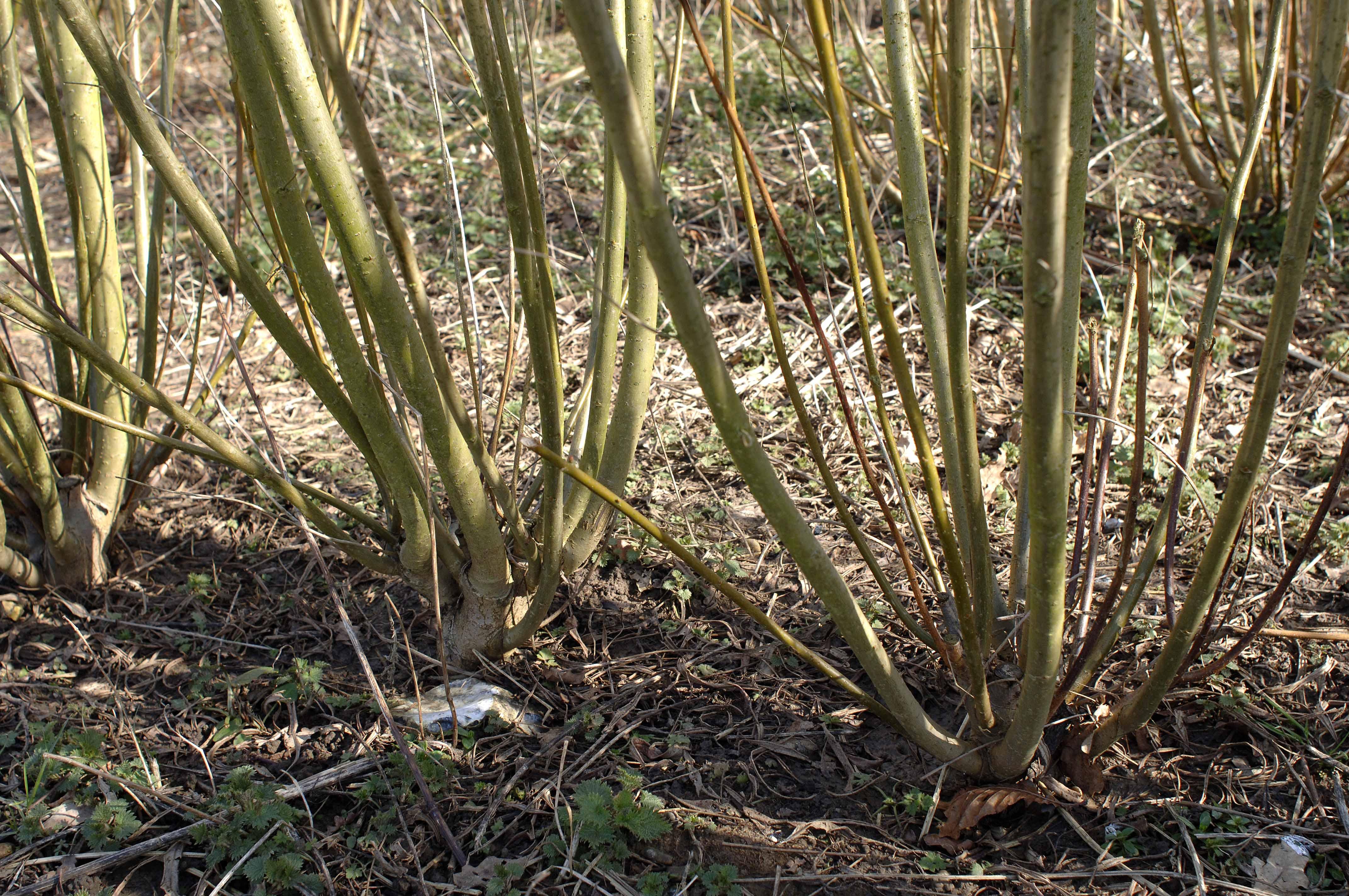
Researchers from the Sainsbury Laboratory and Rothamsted Research, funded by the BBSRC Crop Science Initiative, have discovered a gene that contributes to the coppicing response of willows.
Willows (Salix spp.) are of commercial importance as they provide renewable and sustainable biomass for bioenergy. They grow fast, produce high yields with low fertilizer inputs and easily re-grow after being coppiced (cut back to their base). Coppicing response is of fundamental importance as it enables willows to be grown in three year harvesting cycles, affects vigour and yield, stem and crown architecture and the ratio of bark to wood in the stem. Despite its importance the genetic regulation of coppicing response is little understood. The team used knowledge and methodologies from the model plant species Arabidopsis to identify SxMAX4 as the first coppicing response gene known to date. The study is published today in the Plant Biotechnology Journal.
Although cultivated since the Roman times, and still used for baskets and cricket bats, willows have been subject to only minimal domestication. Luckily, the genus shows huge genetic diversity, from massive trees to small bushes, and there is great potential for crop improvement through breeding. However, improving willows is challenging. Many target traits, including coppicing response, are complex and a good understanding of the genetic basis of developmental processes is required in order to develop improved willow varieties. Studying development in willows is difficult due to their large size, perennial growth cycle and the effort required to assess phenotypes in the field. Also gene function assays that are routinely used in model organisms are not yet established in willows.
Arabidopsis is undoubtedly the best characterized and widely-studied model plant today and there is great interest in transferring knowledge from Arabidopsis to species of commercial importance, such as willows, that are much harder to study. The current findings demonstrate the great results that can be achieved from exploitation of the vast body of knowledge in this model, and of combining plant molecular biology with genetic mapping approaches.
Dr Angela Karp of Rothamsted Research and lead scientist in this study said: “It was known that re-growth of shoots from the cut base after coppicing results through the activation of dormant buds in the coppiced base, and we set up genetic crosses to study this, but the developmental control of this process is very difficult to investigate in willow. In Arabidopsis, many genes are known to control bud activation through a network of interacting plant hormones. We chose to focus on the More AXillary growth (MAX) genes as these are known to have key effects on branching in Arabidopsis. We isolated the genes from willow and Ottoline Leyser’s group introduced them into Arabidopsis plants that lacked functional copies of the relevant MAX genes. We were then able to see the effects of the willow MAX genes in Arabidopsis using a standard branching assay”.
Dr Karp added: “It was really exciting to find that one of the MAX genes, SxMAX4, which affected branching in the Arabidopsis assay, was associated with differences in shoot re-sprouting in willow, and is located in exactly the area in the willow genome that is responsible for regulating this trait. This is the first time a gene has been shown to influence coppicing response and should enable the breeding of plants with desired stem numbers not only in willow but other coppiced trees”.
Professor Ottoline Leyser of the Sainsbury Laboratory said: “This has been a very exciting collaboration for me. I expected that our Arabidopsis work would be useful for understanding trees such as willow, but I did not anticipate quite how similar bud activation in these two species would be. The approach we have used to test willow genes in Arabidopsis could be widely useful for assessing functional genetic diversity in slow-growing species.”
====END====
Notes to the Editors
Rothamsted Research has a willow breeding pipeline and also holds the National Willow Collection, one of the largest collections of willow in the world, both of which are part of Rothamsted's Cropping Carbon Institute Strategic Programme.
About Sainsbury Laboratory
The Sainsbury Laboratory opened in April 2011, with a focus on elucidating the mechanisms that regulate the growth and development of plants. Recent technological advances have created an unprecedented opportunity to obtain an integrated understanding of plant development, and the Laboratory has a highly collaborative and interdisciplinary research environment to capitalise on this, bringing together expertise in molecular, cellular and organismal biology, with computational modelling.
About Rothamsted Research
Rothamsted Research is the longest running agricultural research station in the world, providing cutting-edge science and innovation for nearly 170 years. Their mission is to deliver the knowledge and new practices to increase crop productivity and quality and to develop environmentally sustainable solutions for food and energy production.
Their strength lies in the integrated, multidisciplinary approach to research in plant, insect and soil science.
Rothamsted Research receives strategic funding from the Biotechnology and Biological Sciences Research Council (BBSRC)of £27.2M per annum.
About BBSRC
The Biotechnology and Biological Sciences Research Council (BBSRC) invests in world-class bioscience research and training on behalf of the UK public. Their aim is to further scientific knowledge, to promote economic growth, wealth and job creation and to improve quality of life in the UK and beyond.
Funded by Government, and with an annual budget of around £467M (2012-2013), they support research and training in universities and strategically funded institutes. BBSRC research and the people they fund are helping society to meet major challenges, including food security, green energy and healthier, longer lives. Their investments underpin important UK economic sectors, such as farming, food, industrial biotechnology and pharmaceuticals.
For more information about the BBSRC, their science and impact see: www.bbsrc.ac.uk




